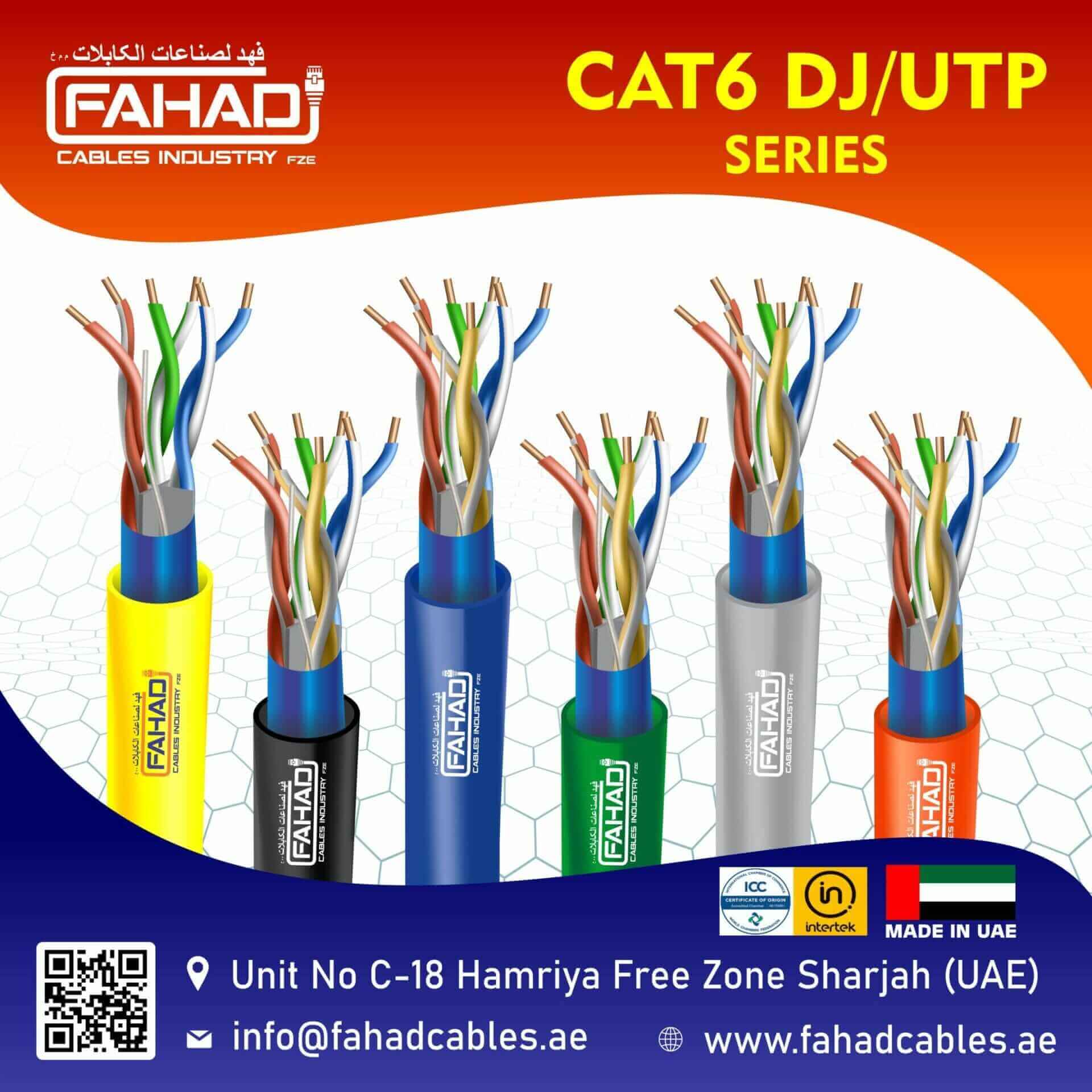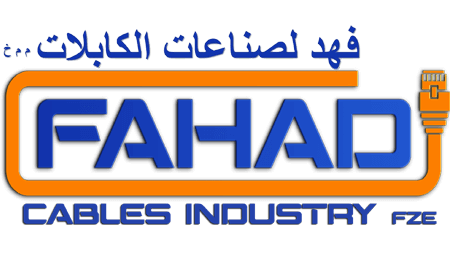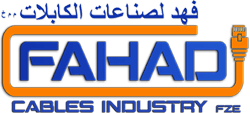- Network Cables
- Control automation Cables
- Data Patch Cord
- fiber optic cable
- Fiber Patch cord Multimode
- Fiber Patch cord Single Mode
- Fiber Pigtails Series
- Coaxial Cables
- security cable wire
- alarm cable
- speaker cables
Comparing 23awg vs 24awg Cat6 Cables: Insights from Fahad Cables Industry FZE

Introduction to Cat6 Cables
Category 6, commonly referred to as Cat6 cables, represent a critical advancement in networking technology, particularly for high-speed data transmission. cat6 shielded cable These cables are designed to support frequencies of up to 250 MHz and are capable of managing data rates 23 vs 24 awg of 1 Gbps over relatively long distances, typically up to 100 meters. Their ability to handle substantial data loads makes them an essential component in modern networks, whether in commercial settings or residential environments.23awg vs 24awg Cat6 Cables
One of the notable features of Cat6 cabling is its construction, specifically in the design and thickness of the conductors used. The gauge of the wire significantly influences the performance and which is better 23awg vs 24awg efficiency of data transmission. Cat6 cables are generally available in different gauges, 24 awg vs 23 awg with 23AWG and 24AWG being the most frequently compared wire sizes. The distinction 24 awg vs 23 awg between these two gauges primarily stems from their diameter, with 23AWG wires being thicker than their 24AWG counterparts.which is better 23awg vs 24awg
The Quality and Innovation of Ethernet Cables from Fahad Cables Industry FZE in the UAE
Introduction to Fahad Cables Industry FZE
Fahad Cables Industry FZE is a prominent name in the cable manufacturing sector in the United Arab Emirates. Established with a vision to provide high-quality electrical solutions, the company has garnered a reputation for its commitment to excellence and innovation. Over the years, Fahad Cables has expanded its product offerings, which include a diverse range of cables, with Ethernet cables being a significant focus. This specialization in Ethernet cables is complemented by the company’s adherence to international standards, reinforcing its position as a trusted supplier within the industry.24awg 23awg
The foundation of Fahad Cables Industry FZE is built upon a rich history of expertise in cable manufacturing. With a team of skilled professionals dedicated to research and development, the company continually seeks to enhance its products to meet evolving market demands. This proactive approach towards innovation has allowed Fahad Cables to stay ahead in the rapidly changing technological landscape. The emphasis on quality assurance is a key component of its operations, with robust testing protocols ensuring that every cable is reliable and efficient. Customers across various sectors, including telecommunications and networking, have benefited from the high-performance Ethernet cables produced by the company.
The ongoing investment in state-of-the-art manufacturing technologies and processes reflects Fahad Cables’ commitment to producing superior products. By integrating advanced materials and innovative engineering techniques, the company effectively addresses the unique requirements of modern networking solutions. This dedication to quality and innovation not only strengthens Fahad Cables’ product portfolio but also solidifies its reputation as a leader in cable manufacturing within the UAE market. As the demand for reliable, high-speed data transmission continues to rise, Fahad Cables remains poised to deliver exceptional Ethernet cables that meet the needs of contemporary infrastructures.
Understanding AWG Measurements
The American Wire Gauge (AWG) is a standardized wire gauge system used in the United States to denote the diameter of electrical wires. This system assigns a unique number to different wire thicknesses. The gauge number inversely correlates with the diameter: as the cat6 awg 23 vs 24 gauge number 23awg vs 24 awg increases, the wire diameter decreases. cat6 awg 23 vs 24 For instance, a 23 AWG wire is thicker than a 24 AWG wire. This measurement is crucial for various applications, including telecommunications, where predetermined resistance, flexibility, and current-carrying capability are essential.23awg meaning
When comparing 23awg vs 24awg Cat6 Cable cables, understanding the implications of these wire sizes is fundamental. The larger cat6 24awg vs 23awg diameter of 23AWG wires allows them to cat 6 23awg vs 24awg carry more current with less resistance, making them suitable for applications that demand higher power or lower signal loss over longer distances. As a result, 23AWG cables may provide slightly better performance in data transmission, particularly in environments with challenging electromagnetic interference.
Understanding Ethernet Cables
Ethernet cables play a crucial role in networking by facilitating the interconnection of devices within local area networks (LANs). They are designed to transmit data packets between computers, routers, switches, and other devices, ensuring effective communication and a robust internet connection. The significance of Ethernet cables cannot be understated, as they are foundational to both home and business networking infrastructures, supporting various applications ranging from simple internet browsing to complex data centers.
There are several types of Ethernet cables, each tailored for specific networking requirements. The most common types include Cat5, Cat5e, Cat6, and Cat7 cables. Cat5 cables, the earliest standard in Ethernet technology, support data speeds up to 100 Mbps and are typically suitable for basic networking tasks. However, with advancements in technology, the Cat5e variant emerged, enhancing performance by reducing crosstalk and enabling speeds of up to 1 Gbps. This makes Cat5e a popular choice among consumers seeking reliable yet cost-effective solutions.
Performance and Speed Comparisons
When evaluating network performance, two of the primary considerations are data transmission speeds and frequency performance. Both 23AWG and 24AWG Cat6 cables are designed to support high-speed data transmission, but notable differences in their construction can impact overall performance metrics. The 23AWG cables, with their thicker conductors, are generally capable of providing better electrical conductivity compared to their 24AWG counterparts. This increased conductivity can lead to reduced resistance, which can significantly enhance the performance in terms of data transfer speeds.23awg 24awg差異
In terms of frequency performance, both cable types are rated for use in environments up to 250 MHz, making them suitable for a variety of applications including voice and video transmissions. However, user-tested results indicate that 23AWG cables demonstrate a more robust ability to maintain signal integrity over longer distances. Notably, awg23 vs awg 24 when subjected to real-world conditions, 23AWG cables consistently outperform 24AWG cables, particularly in scenarios where the transmission distance exceeds 100 meters. This reliability is vital in densely populated data centers or expansive office environments, where maintaining high performance is crucial.
Bandwidth capabilities further differentiate these two types of cables. While both are rated to support gigabit Ethernet, the performance often leans in favor of the thicker 23AWG Cat6 cables, especially when paired with high-demand applications that require significant bandwidth. For users who prioritize performance, particularly in data-intensive environments, the additional investment in 23AWG cabling can yield measurable improvements in overall network speed and reliability.
In summary, while both 23AWG and 24AWG Cat6 cables are competent choices for network infrastructure, the differences in performance metrics such as data transfer speeds, frequency handling, and bandwidth capabilities should guide users in making an informed decision that best meets their specific network needs.23 awg vs 24 awg cat 6
Fahad Cables Ethernet Cable Range
Fahad Cables Industry FZE offers a diverse range of Ethernet cables designed to meet the varying demands of modern networking environments, whether for residential purposes or commercial applications. Their product lineup includes several types of Ethernet cables, including Cat5e, Cat6, Cat6a, and the emerging Cat7 standards, each tailored to specific performance characteristics and transmission requirements.
Starting with the Cat5e cables, these are well-known for their suitability in home networks. Capable of supporting speeds up to 1 Gbps over distances of 100 meters, they are ideal for basic internet usage, streaming, and gaming. The enhanced specifications not only reduce crosstalk but also improve overall network performance, making them a popular choice for residential setups.
For environments demanding higher data rates, Fahad Cables provides Cat6 cables. These cables can handle speeds of up to 10 Gbps over shorter runs of up to 55 meters, making them increasingly valuable for small to medium-sized business networks. The shielding and improved insulation techniques utilized in Cat6 cables further minimize interference, resulting in more reliable performance in densely populated areas.
Manufacturing Insights from Fahad Cables Industry FZE
Fahad Cables Industry FZE is dedicated to producing high-quality Cat6 cables, including both 23AWG and 24AWG variations. The manufacturing processes for these cables involve a series of meticulous steps that ensure product efficacy and compliance with industry standards. The choice between 23AWG and 24AWG significantly influences these processes, particularly in terms of wire thickness, conductor material, and the overall design of the cables.
When manufacturing 23AWG cables, the process typically involves using thicker copper conductors that enhance signal transmission and reduce electrical resistance. This necessitates precision in the drawing process to maintain consistent diameter and conductivity throughout the manufacturing line. On the other hand, while 24AWG cables use a thinner conductor, they still meet the strict guidelines set by telecommunications authorities, thus allowing them to be a cost-effective option without compromising quality.
Quality control measures are crucial at every stage of production. Fahad Cables Industry FZE implements rigorous testing protocols to ensure that both 23AWG and 24AWG cables meet or exceed national and international standards. This includes adherence to ISO certifications and compliance with standards set by organizations like the Telecommunications Industry Association (TIA). Each batch of cables is subjected to comprehensive testing, which includes checking for electromagnetic interference (EMI), signal integrity, and physical durability.
Additionally, product consistency is achieved through automated machinery and skilled technicians who monitor the production lines for any anomalies. This dual approach to manufacturing enables Fahad Cables Industry FZE to produce reliable and high-performing Cat6 cables that cater to the diverse needs of their clientele. The firm’s commitment to quality is further reflected in its continuous investment in state-of-the-art equipment and ongoing staff training to embrace modern manufacturing technologies.
Use Cases and Applications for 23AWG and 24AWG
Understanding the specific use cases and applications for 23AWG and 24AWG Cat6 cables is crucial for making an informed decision tailored to your networking needs. cat 6 23 vs 24 awg Both types of cables are designed to deliver high-speed data transmission, but their construction, particularly the wire gauge, affects their performance in various environments.
For residential settings, 24AWG Cat6 cables are often the preferred choice. They are lightweight and flexible, making them easier to install in home environments where space may be limited. Their performance covers typical bandwidth needs for internet browsing, streaming, and online cat6 cable 23awg vs 24awg gaming. The 24AWG design offers sufficient support for distances up to 100 meters, typical for most residential layouts, making them a practical option for home users who require reliable connectivity without the need for excessive durability.24 awg cable diameter
On the other hand, 23AWG Cat6 cables present a distinct advantage in commercial and industrial applications. The thicker wire not only reduces electrical resistance but also enhances the cable’s overall durability. This characteristic is indispensable in environments that demand a higher degree of reliability and have more considerable wiring demands, such as data centers, server rooms, and large office spaces. In these settings, the increased capacity of the 23AWG cable to support greater lengths without losing signal integrity becomes critical for maintaining efficient network performance. awg24 vs awg23
Furthermore, the choice between 23AWG and 24AWG cables can hinge on future scalability. If networking needs are anticipated to grow—such as additional devices or higher-speed requirements—23AWG cables may prove to be a more prudent investment, enabling the infrastructure to support advanced applications without frequent upgrades.
Ultimately, selecting the appropriate cable gauge hinges on the specific context of use, balancing between immediate needs and long-term planning for a robust networking infrastructure.
Cost Considerations: 23AWG vs 24AWG
When evaluating the cost differences between 23AWG and 24AWG Cat6 cables, it is essential to consider various factors that contribute to production costs, market pricing, and ultimately, the long-term value of these cables. 23AWG cables typically contain a thicker copper wire, which translates into a higher production cost compared to their 24AWG counterparts. The increased diameter of the wire improves the cable’s electrical performance, allowing for higher data transmission speeds over longer distances. However, this enhanced performance comes at a premium, making 23AWG cables generally more expensive on a per unit basis.
In the market, the price disparity between 23AWG and 24AWG Cat6 cables can be observed, with the former often priced higher due to its superior transmission capabilities. Prices may vary based on the manufacturer’s brand, the complexity of the manufacturing process, and the materials used. Consumers should be aware that while 24AWG cables may be more budget-friendly, they may not always meet the stringent performance requirements of high-bandwidth applications, which can lead to potential additional costs in the future.
Another critical aspect to consider is the long-term value assessment. While 23AWG cables involve higher upfront costs, their ability to deliver superior performance can result in lower maintenance costs and fewer network disruptions over time. This durability and performance advantage can make 23AWG cables a more cost-effective solution in applications where reliability and speed are paramount. Conversely, while 24AWG cables might help keep initial expenses low, the potential for diminished performance could lead to increased costs related to troubleshooting or upgrading network infrastructure.
Installation and Maintenance Tips
When it comes to installing and maintaining 23AWG and 24AWG Cat6 cables, best practices can significantly enhance performance and extend lifespan. The initial step in installation is to ensure that the selected cable type suits the specific networking environment, as both types have different characteristics. 23AWG cables are thicker and more robust, making them suitable for longer runs and environments with high transmission demands. In contrast, 24AWG cables are lighter and more flexible, ideal for shorter distances and tight spaces.
During the installation process, it is crucial to avoid excessive bending and twisting of the cables. Both types should be installed without exceeding their bend radius, typically outlined in manufacturer guidelines. Cabling should follow structured pathways to minimize interference and maintain signal integrity. what is the difference between 23awg and 24awg Utilizing cable management tools such as trays, ties, and conduits ensures proper organization and reduces strain on the cables.
Regular maintenance is key to ensuring longevity and peak performance. Periodic inspection of connections helps identify loose or corroded contacts that can lead to performance issues. diameter of cat6 cable In addition, environmental factors such as excessive moisture or extreme temperatures should be monitored, as they can affect cable integrity. Keeping the installation area clean and dry is essential to prevent rodents and other pests from causing damage.
In the event of connectivity issues, troubleshooting should begin with verifying that all connections are secure and that the cable is not damaged. Utilizing a cable tester which is better 23 awg or 24 awg can pinpoint faults, short circuits, or other issues efficiently. For optimal performance, consider upgrading cabling in high-traffic areas or when expanding the network, ensuring compatibility with existing systems for seamless operation.
By following these tips for installation and maintenance, users can maximize the effectiveness and durability of both 23AWG and 24AWG Cat6 cables, ensuring a reliable network setup for various applications.
Conclusion: Making the Right Choice
When selecting between 23AWG and 24AWG Cat6 cables, it is essential to consider various factors that may impact performance and usability. Through this comprehensive comparison, we have identified key distinctions between the two gauges, including their respective strengths and weaknesses. The 23AWG cable offers greater durability and improved performance over longer distances, making it an ideal choice for settings where long runs are necessary or where environmental conditions could lead to potential signal interference. This cable is particularly suitable for data centers and commercial environments where reliability is paramount.
On the other hand, the 24AWG cable proves to be more flexible and lightweight, making it a practical option for residential installations or scenarios that demand easier handling and installation. Its slightly thinner construction may result in lower transmission capabilities over extended lengths, but it can effectively serve standard networking needs within shorter distances. Users who prioritize flexibility and ease of installation may find 24AWG cables to be the preferred choice.
Ultimately, the decision between 23AWG and 24AWG Cat6 cables should be influenced by the specific needs of the user, including cable length, environment, and the required bandwidth. For high-demand applications or where performance is critical, 23AWG cables may provide the best advantage. Conversely, for casual networking tasks or in environments where installation is a major concern, 24AWG cables would suffice. By carefully weighing these factors, users can make informed decisions that enhance their network performance and meet their individual requirements.

